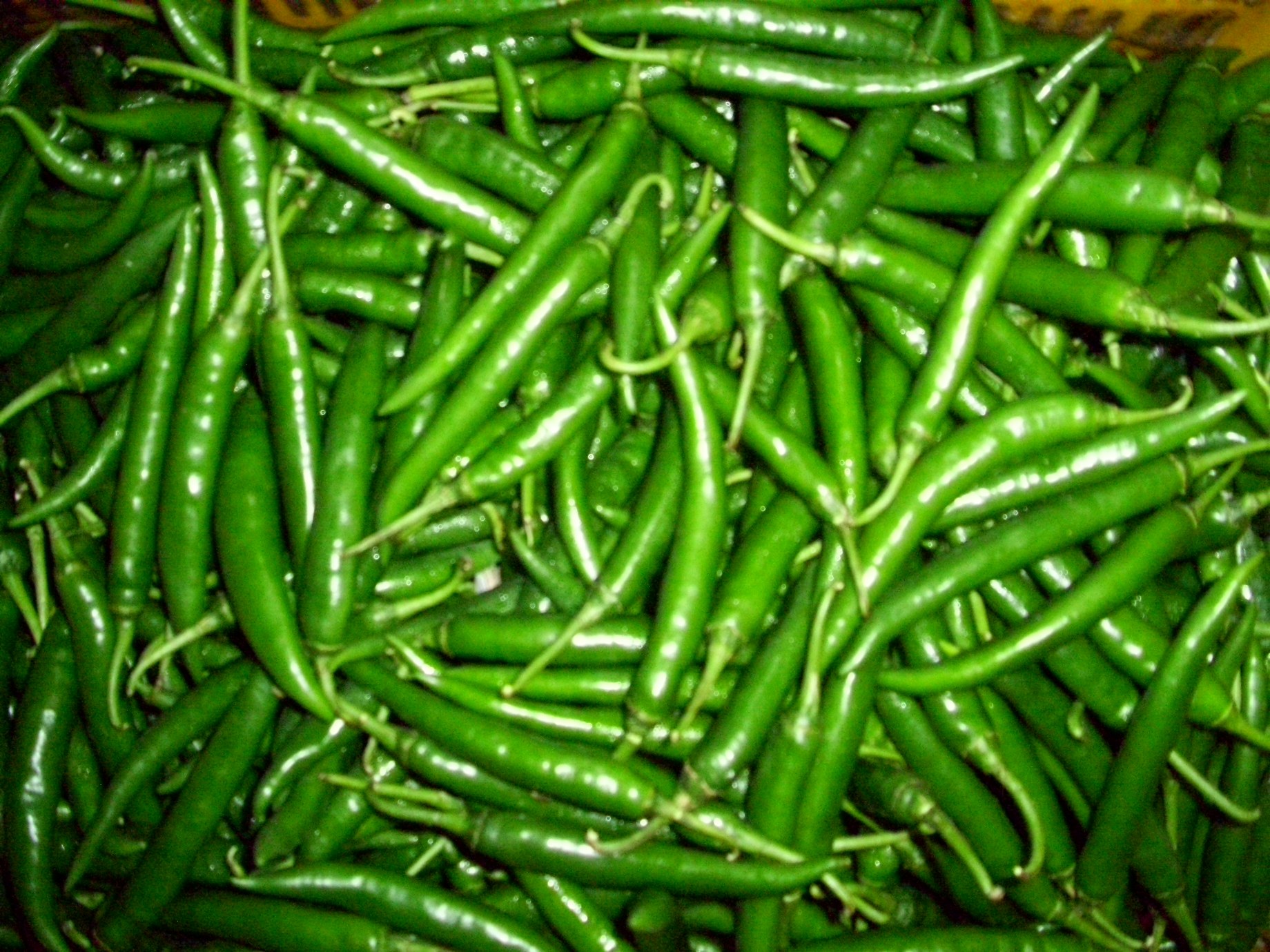
Crop: Chilli
Scientific name : Capsicum annuum (Lin.)
Common / Local Name : Chilli/Mirchan (Konkani)
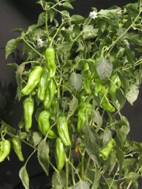
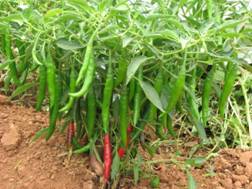
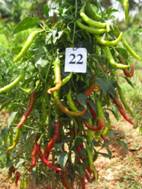
Chilli is an important vegetable and spice in every Indian cuisine and is grown throughout the country. Pungent forms are used as green chilli, whole dry chilli, chilli powder, chilli paste, chilli sauce, chilli oleoresin or as mixed curry power. Dried fruits are extensively used in spice.
Soil should be prepared to a fine tilth by 2-3 ploughings. FYM should be incorporated in soil at the time of final ploughing. Ridges and furrow are prepared at 45-60cm distance. Seedlings are transplanted in levelled land in plots of convenient size for irrigation.
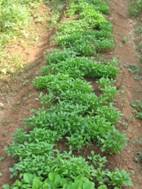 Chilli nursery on raised beds
Chilli nursery on raised beds
1.0-1.5kg seeds sown in an area of three cents is required to raise seedlings to plant in one hectare. Generally 40-45 days old seedlings are transplanted. Clipping of capsicum and chilli seedlings about 10 days prior to transplanting helps to accelerate growth of axillary buds and results in better branching.
This crop (both hot and sweet pepper) was first introduced by Portuguese to India more particularly to Goa. Presently, there are three basic types of chillies viz., Tarvatti, Lovongi and Portugali based on its place of cultivation, usage, pungency etc., in Goa. Among these, Portugali has become almost extinct because of several factors. The Tarvatti type is alone available as it is perennial type and its seeds are disseminated through birds.
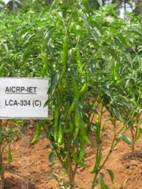 Fig 1.2
Fig 1.2
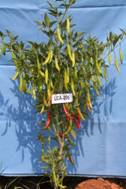 Fig 1.3
Fig 1.3
Arka Meghana: High yielding F1 hybrid produces long fruits (10cm). Early variety produces 50% flowering in 25 days after transplanting.
Pusa Jwala: Yield 7.5t/ha of green chilli. Plants dwarf and bushy. Fruits 9-10cm long, curved, thin, light green coloured and medium pungent. Tolerant to mosaic.
Application of 20tonnes of FYM and 120kg N, 40-60kg P2O5 and 20-40kg K2O are recommended in majority of states. FYM is applied by broadcasting at the time of final ploughing. Spot application of FYM in furrows or at the point of planting is also followed by farmers. Full dose of P and K and half dose of N is applied 10-15 days after transplanting.
Timely irrigation is essential especially for fruit set and development. The irrigation is required at every third /4th day during summer while in winter, it should be 7-8 days interval. For row planted crop, drip irrigation is advantageous and fertilizer can be supplied through drip irrigation.
In chilli, all intercultural operations are aimed at conserving soil moisture, to remove weeds and to provide aeration to soil. Inter cultivation, by way of hoeing, begins as soon as seedlings are established. In initial stages, shallow inter cultivation is done to remove weeds and for conservation of soil moisture. In later stages, deep inter cultivation is done by way of earthing up and making ridges and furrow. Use of herbicides along with hand weeding is practiced for weed control in chilli.
Leaf curl complex: Leaf curl in chilli is caused by sucking insects like mites, thrips and aphids and by leaf curl virus. The tiny insects feed on under surface of young leaves in large numbers and cause crinkling, defoliation and stunned growth. Spraying of need oil garlic mixture is recommended as a prophylactic measure for control of insects
Dieback and anthracnose: Disease is caused by a soil borne pathogen, Colletotrichum capsicii. Initially small water soaked spots appear on fruits which later become sunken and dark in colour with numerous concentric rings. Affected fruits rot and fall down. Spraying of Dithane M-45 or Bavistin (1.5g/l) of water at 15-20 days interval is effective.
I. Anthracnose and Ripe Fruit Rot
Symptoms:
- The disease occurs in die back and ripe fruit rot phases.
- Die back phase: The chief symptom is the necrosis of tender twigs from the tip downwards. The entire plant or branch may wither away. The twigs become straw coloured in advanced stage of the disease. Large numbers of black dots (acervuli of the fungus) are seen scattered all over the necrotic parts of the plants. Only the top or side branches may be killed or sometimes in case of severe attack the entire plant may be withered. The fungus may also attack the fruit stalk and spread along the stem.
Ripe fruit rot phase: Small, black, circular spots appear on the skin of the fruit and spread in the direction of the long axis of the fruit. The spots are sunken with black margins. The sunken spots are covered with a pinkish mass of fungal spores. as the disease progresses, the spots spread, forming a concentric markings with dark fructification (acervuli of the fungus). The fruits with many spots drop off prematurely resulting in the heavy loss of yield. Hen the diseased fruit is cut open the lower surfaces of skin is found covered with minute, elevated , spherical, black stromatic masses of the fungus. In advanced stages, the seeds are covered with a mat of fungal hypae. Such seeds turn rusty in colour.
- The fungus is externally seed borne and the secondary spread occurs through air borne conidia.
- The fungus may survive on dead twigs stored under dry condition.
- The fungus also survives in the field in plant debris.
Management:
- Procure seeds from the healthly, spotless fruits.
- Treat seeds with Thiram, Brassicol @ 2g/kg seed or Belnbate /Bav\istin/ Agrosan GN @ 1g/kg seed before sowing.
- Spray Blitox 50 or Fytolan @2.5g/litre water or Perenox @2g/litre of water after appearance of the disease. Repeat spraying at 10-15 days interval.
- Plant debris after harvest should be collected and burnt.
- Grow resistant varieties whenever available.
II. Powdery Mildew:
Symptoms:
- The characteristic white powdery growth appears on the leaves of the terminal shoots.
Management:
- Spray the crop with Karathane (Dinocap) @0.05% or wettable sulphur (Thioit) @ 0.23% at 15 interval ( Gohokar and Peshney, 1981).
- Aureofungin @50ppm also gives good control of the disease.
III. Leaf Curl Virus
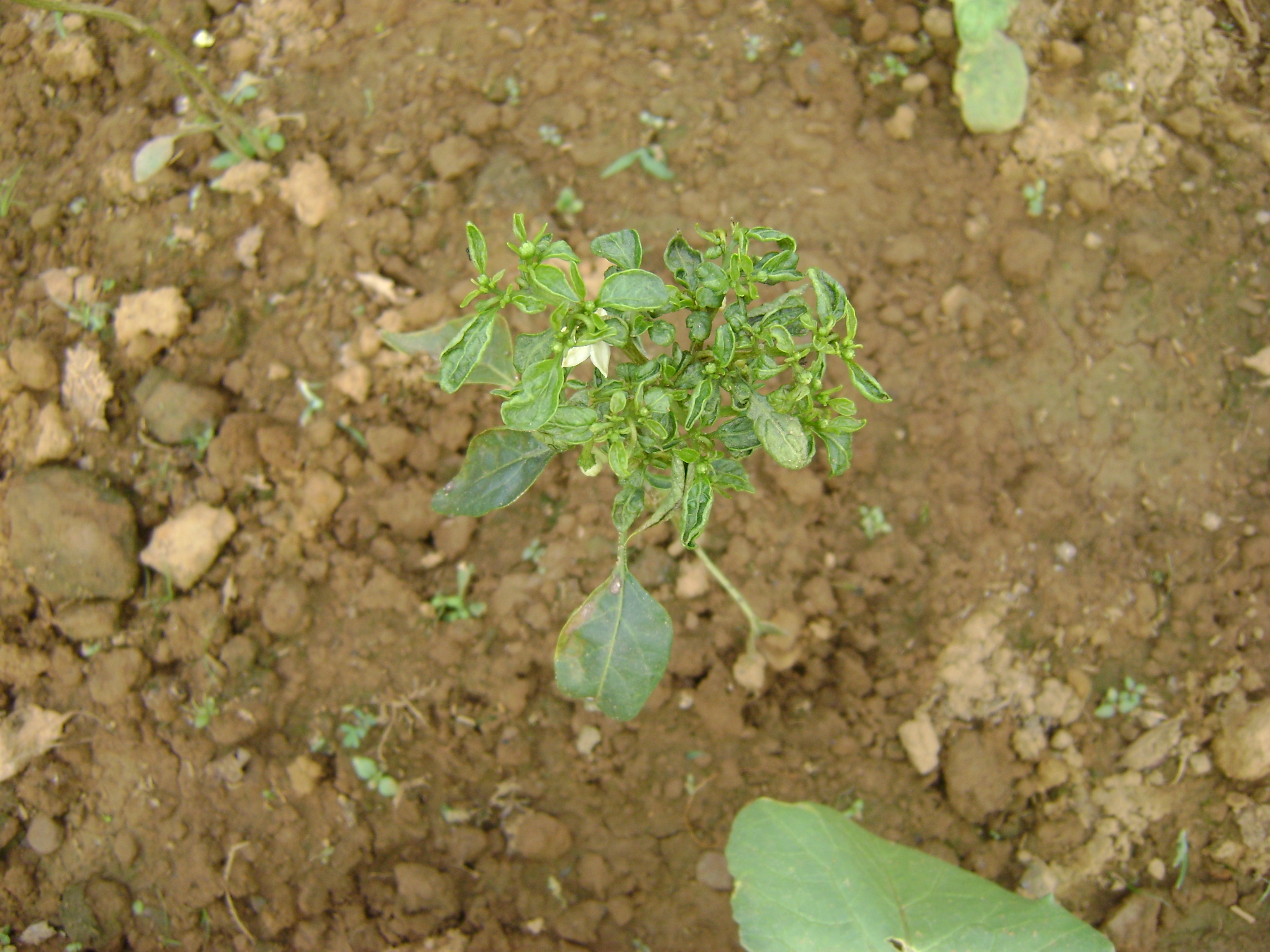 Chilli-leaf curl
Chilli-leaf curl
Symptoms:
- Abaxial and adaxial curling of the leaves accompanied by puckering and blistering of intervienal areas and thickening and swelling of the veins.
- In advanced stages, maxillary buds are simulated to produce clusters of leaves which are reduced in size.
- The whole plant assumes bushy appearance with stunted growth.
- Flowers and fruits are few and small, being curled at the end.
- The virus has a wide host range. However, important ones are tobacco, bell pepper and several weed hosts.
Management:
- Rouging of infected plants from the field.
- Removal of all the weeds from and around the field.
- Soil application of carbofuran at 1.5kg a.i./ha in the nursery and at the time of transplanting followed by 2-3 sprays of dimethoate or monocrotophos both at 0.05% at 10 days interval prevent whitefly multiplication and spread of disease.
IV. Bacterial wilt
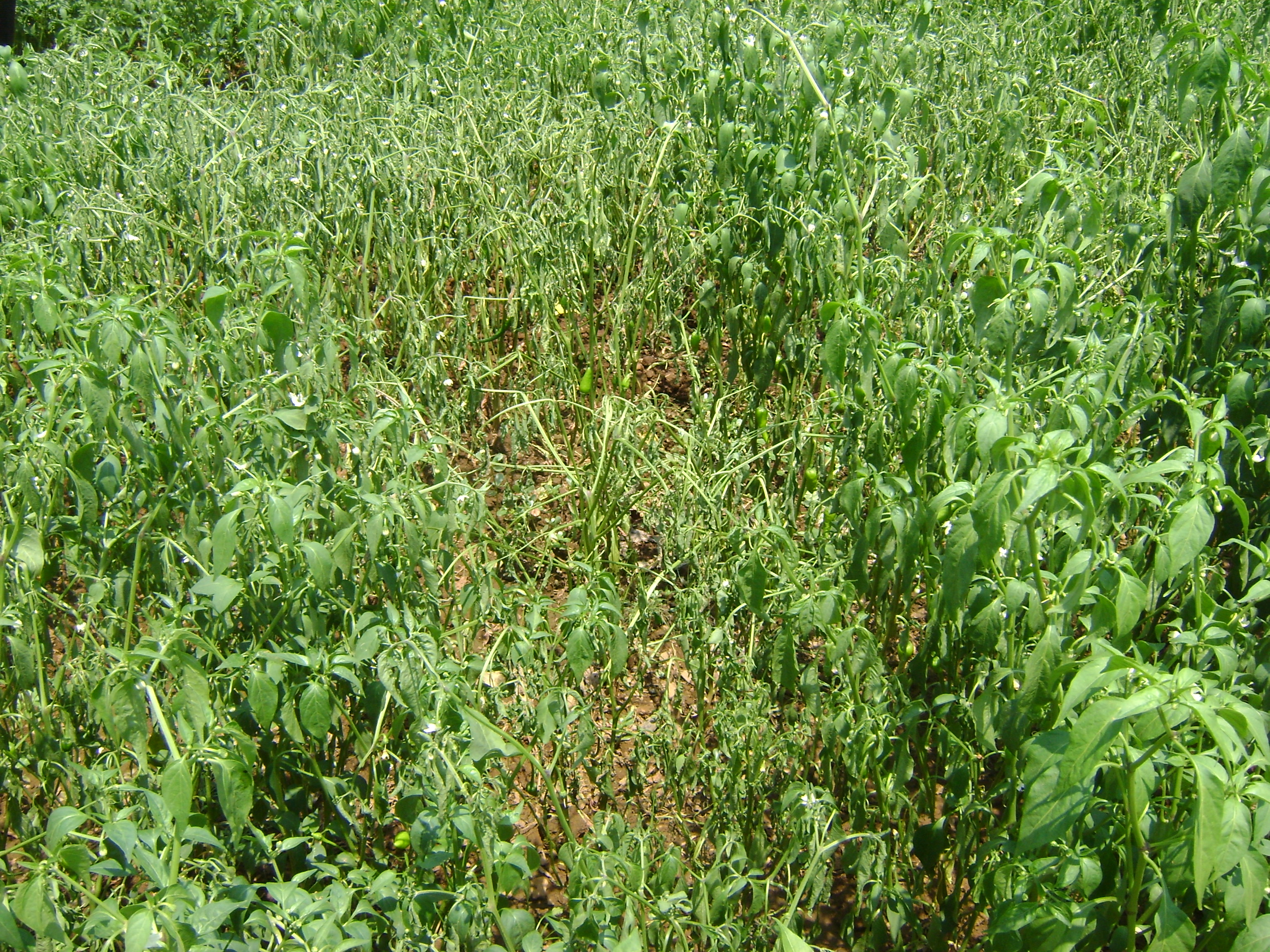 chilli-bacterial wilt
chilli-bacterial wilt
Symptoms:
- The disease occurs in scattered plants or groups of plants in the field.
- Characteristic feature is wilting of the entire plant with no leaf yellowing.
- Cross sections cut from root and lower stems of the diseased plant exude milky streams of bacteria from the vascular system when suspended in wa5ter.
- The bacteria have a wide host range and can survive in soil for long periods.
- The disease is favoured by wet, warm conditions.
Management:
- Chilli cvs. Kandhari, Pungent pride, Cherry red, Vattal, Dark purple, Long red and Pant C-1 were reported resistant.
- Manjari and Ujwala developed by Kerala Agricultural University, Vellanikara, are also highly resistant to bacterial wilt.
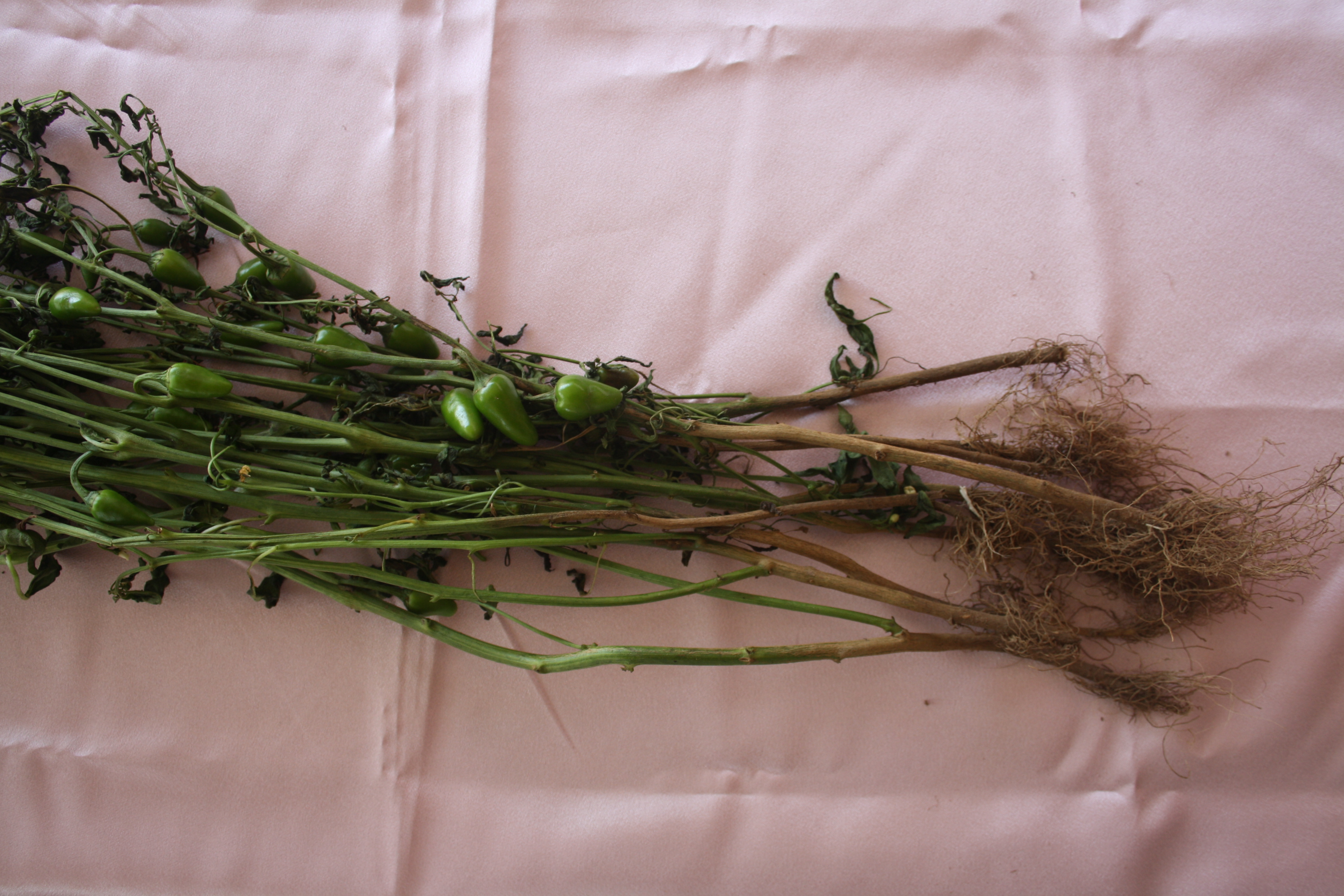 chilli-root rot
chilli-root rot
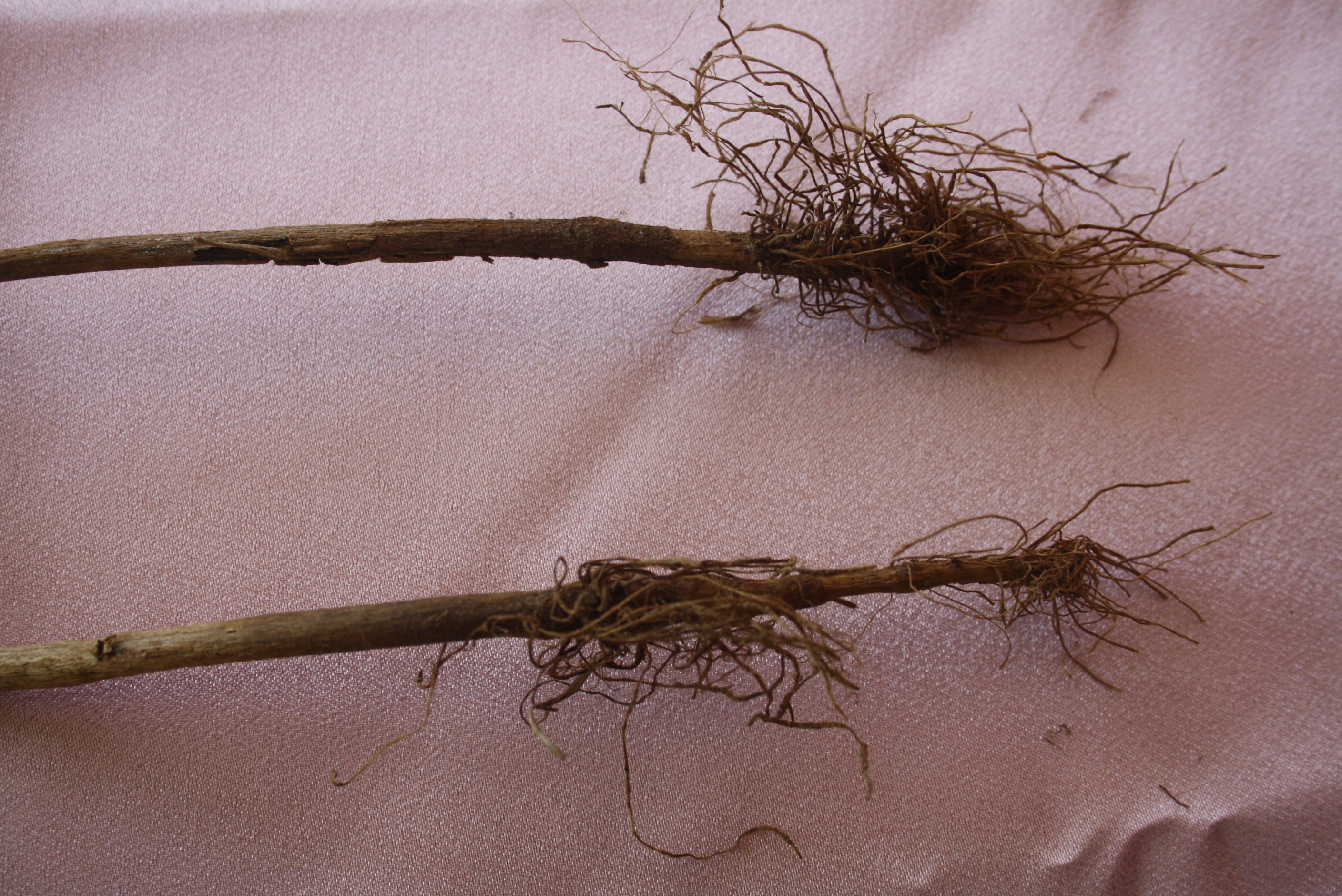 chilli-root rot
chilli-root rot
Chilli is harvested by hand picking and harvesting extends up to two months. Farmers usually take one or two harvests for green chilli purpose even if crop is raised for dry chilli purpose. Yield of fresh green chilli is 3-4 times more than that of fresh red ripe chilli and 6-10 times than that of dry chilli. Yield under rainfed and an irrigated condition varies considerably. Green chilli: 10-15 t/ha
Dry chilli: 1-1.5t/ha
Chilli and capsicum respond well to an array of plant growth regulators. GA (10-100 ppm), NAA (20-200 ppm) and CCC (1000 ppm) were effective for increasing fruit set and yield.
Input availability |
Address/Contact details |
| Seeds | Department of Agriculture, Panaji, ICAR -CCARI, Old Goa, KAU, Thrissur, Kerala, OUAT, Bhubaneswar and IIHR, Bangalore |
Fertilizers |
For detailed list kindly click here |
Pesticides |
For detailed list kindly click here |
| Machineries | Department of Agriculture, Panaji, Goa tractors and Tillers, Mapusa |
|